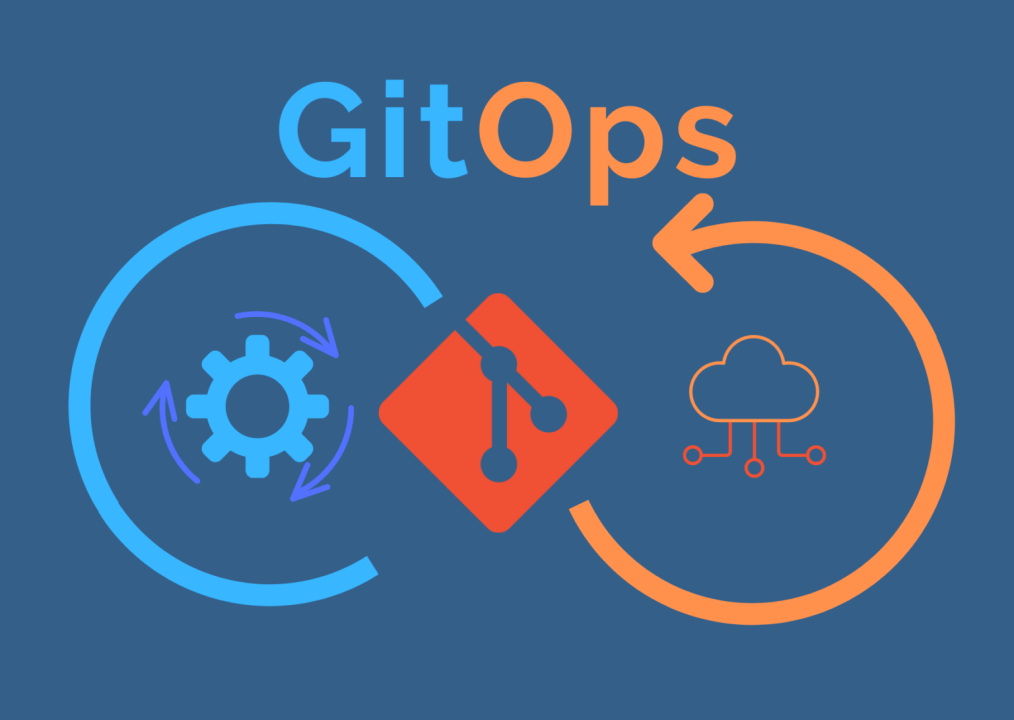GitHub Actions is a powerful automation and CI/CD (Continuous Integration and Continuous Deployment) tool provided by GitHub. It allows developers to automate, build, test, and deploy their code directly from their GitHub repositories. GitHub Actions uses a system of workflows defined in YAML files that can be triggered by various events, such as code pushes, pull requests, or scheduled tasks. This enables developers to create custom workflows for CI/CD, automating repetitive tasks and integrating with various third-party services.
Key Features of GitHub Actions:
- Workflow Automation:
- GitHub Actions allows users to define custom workflows to automate tasks such as building, testing, and deploying code. These workflows are triggered by events like code pushes, pull requests, issue creation, or even scheduled times.
- Event-Driven:
- GitHub Actions is event-driven, meaning workflows can be triggered by specific GitHub events (e.g., commits, pull requests, issue comments) or external events like webhooks.
- YAML-Based Configuration:
- Workflows in GitHub Actions are defined using YAML configuration files (
.github/workflows/). These files describe the sequence of jobs, steps, and actions that will be executed when certain events occur.
- Built-in CI/CD:
- GitHub Actions integrates seamlessly with GitHub repositories to automate the process of Continuous Integration and Continuous Delivery (CI/CD). Developers can run tests, build code, and deploy applications to various environments (e.g., AWS, Azure, or Google Cloud) whenever code is pushed or merged.
- Jobs and Steps:
- Workflows consist of jobs, which can run in parallel or sequentially, and each job consists of multiple steps. Each step can either run a command or invoke an action, such as checking out the repository code, installing dependencies, or deploying applications.
- Predefined and Custom Actions:
- GitHub Actions provides a marketplace of predefined actions (e.g., build, test, deploy) that can be reused. Developers can also create their own custom actions to suit specific project needs, written in Docker, JavaScript, or any other language.
- Matrix Builds:
- GitHub Actions supports matrix builds, where a single job can be executed across different combinations of environments (e.g., different operating systems, language versions, or dependencies). This allows developers to test their code on multiple configurations with minimal effort.
- Self-Hosted and GitHub-Hosted Runners:
- GitHub provides GitHub-hosted runners, which are virtual machines that execute workflows in the cloud. For more control, developers can also use self-hosted runners to run workflows on their own infrastructure.
- Secret Management:
- GitHub Actions provides built-in support for securely storing and managing sensitive information, such as API keys and passwords, through secrets. These secrets can be accessed within workflows but are not exposed in logs or to unauthorized users.
- Third-Party Integrations:
- GitHub Actions supports integration with third-party services, such as AWS, Google Cloud, Azure, Slack, Docker, Kubernetes, and many more. This allows workflows to automate tasks like cloud deployments, notifications, or infrastructure management.
Example of a GitHub Actions Workflow:
A simple CI workflow that runs on every push to the repository and tests the application using Node.js:
name: CI Workflow
on: [push]
jobs:
build:
runs-on: ubuntu-latest
strategy:
matrix:
node-version: [12.x, 14.x, 16.x]
steps:
- name: Checkout repository
uses: actions/checkout@v2
- name: Set up Node.js
uses: actions/setup-node@v2
with:
node-version: ${{ matrix.node-version }}
- name: Install dependencies
run: npm install
- name: Run tests
run: npm testKey Components of GitHub Actions:
- Workflows:
- A workflow is an automated process defined in a YAML file that runs one or more jobs. It can be triggered by events such as code pushes, pull requests, or scheduled times. Workflows are stored in the
.github/workflows/directory of a GitHub repository.
- Jobs:
- A job is a collection of steps that run in the same virtual environment. Jobs can be run in parallel or sequentially. Each job specifies a runner (e.g.,
ubuntu-latest) on which it will execute.
- Steps:
- A step is an individual task performed within a job. Each step can either run a command or invoke an action. For example, a step might check out the repository code, install dependencies, or run a test suite.
- Actions:
- Actions are standalone, reusable components that can be called within a workflow. GitHub provides a marketplace with thousands of pre-built actions for common tasks (e.g., setting up environments, running tests, deploying code). Developers can also create and share their own actions.
- Runners:
- A runner is a server that executes workflows. GitHub provides GitHub-hosted runners (pre-configured virtual machines running Linux, macOS, or Windows) or you can set up self-hosted runners for more control.
- Triggers:
- Triggers are events that start a workflow. Common triggers include
push(when code is pushed to the repository),pull_request(when a pull request is opened or updated),schedule(runs the workflow on a schedule), andworkflow_dispatch(manual trigger).
Popular Use Cases for GitHub Actions:
- Continuous Integration (CI):
- Automatically build, test, and validate code changes. For example, running unit tests or linting code whenever a developer pushes new commits or opens a pull request.
- Continuous Delivery (CD):
- Automate the process of deploying code to various environments, such as staging or production, based on triggers like a successful merge or a tag release.
- Automated Testing:
- Run automated tests for different environments (e.g., different Node.js versions, operating systems) in parallel, ensuring that the code works across multiple configurations.
- Build Automation:
- Automatically build binaries, Docker images, or other artifacts when code is committed. These builds can be pushed to artifact repositories or deployed to cloud environments.
- Scheduled Workflows:
- Trigger workflows on a set schedule using cron expressions. This is useful for tasks like running nightly builds, generating reports, or performing scheduled maintenance tasks.
- Security and Vulnerability Scanning:
- Automatically run security checks on your codebase, such as checking for vulnerable dependencies or code quality issues, and notify developers when issues are detected.
- Release Automation:
- Automate the process of generating releases based on version tags. You can create GitHub releases, attach build artifacts, and publish release notes automatically.
- Infrastructure as Code (IaC):
- Automate the provisioning and management of cloud infrastructure using tools like Terraform, AWS CloudFormation, or Azure ARM templates. GitHub Actions can be used to apply changes to infrastructure code and deploy resources.
GitHub Actions Marketplace:
- The GitHub Actions Marketplace is a repository of pre-built actions that you can use in your workflows. These actions cover a wide range of tasks such as testing, building, deploying, and integrating with external services like cloud providers, container registries, and notification tools.
- Example actions include:
actions/checkout: Checks out the source code from the repository.actions/setup-node: Sets up a Node.js environment.aws-actions/configure-aws-credentials: Configures AWS credentials for AWS CLI and SDK.
Advantages of GitHub Actions:
- Native GitHub Integration:
- Since GitHub Actions is built into GitHub, it seamlessly integrates with repositories, making it easy to set up and use. There’s no need for third-party CI/CD tools to handle automation.
- Flexibility and Customization:
- GitHub Actions allows for extensive customization of workflows through jobs, steps, and actions. Developers can tailor workflows to meet the specific needs of their projects, integrating with other tools and services.
- Rich Ecosystem of Actions:
- The GitHub Actions Marketplace provides thousands of pre-built actions, which reduce the time required to automate tasks. Developers can use, share, and customize actions for various use cases.
- Parallel and Matrix Builds:
- GitHub Actions supports running jobs in parallel and using matrix builds, allowing teams to test their code on multiple platforms, configurations, and versions with ease.
- Self-Hosted Runners:
- GitHub Actions provides the flexibility to run workflows on your own infrastructure using self-hosted runners, offering greater control over the environment in which workflows are executed.
Limitations of GitHub Actions:
- Pricing for Large Teams:
- While GitHub Actions provides free minutes for public repositories and limited free usage for private repositories, the costs can increase for teams with large projects, many contributors, or high workflow usage.
- Learning Curve:
- While the YAML syntax is straightforward, setting up complex workflows, especially with custom actions, might require a learning curve for teams new to CI/CD or automation.
Conclusion:
GitHub Actions is a versatile and powerful CI/CD and automation platform integrated directly into GitHub. It allows developers to automate building, testing, and deploying code with workflows that respond to GitHub events. With its event-driven nature, extensive ecosystem of reusable actions, and flexibility for defining custom workflows, GitHub Actions has become a go-to tool for automating processes within GitHub repositories. It simplifies the setup of CI/CD pipelines and accelerates software development by integrating directly into the version control workflow.




